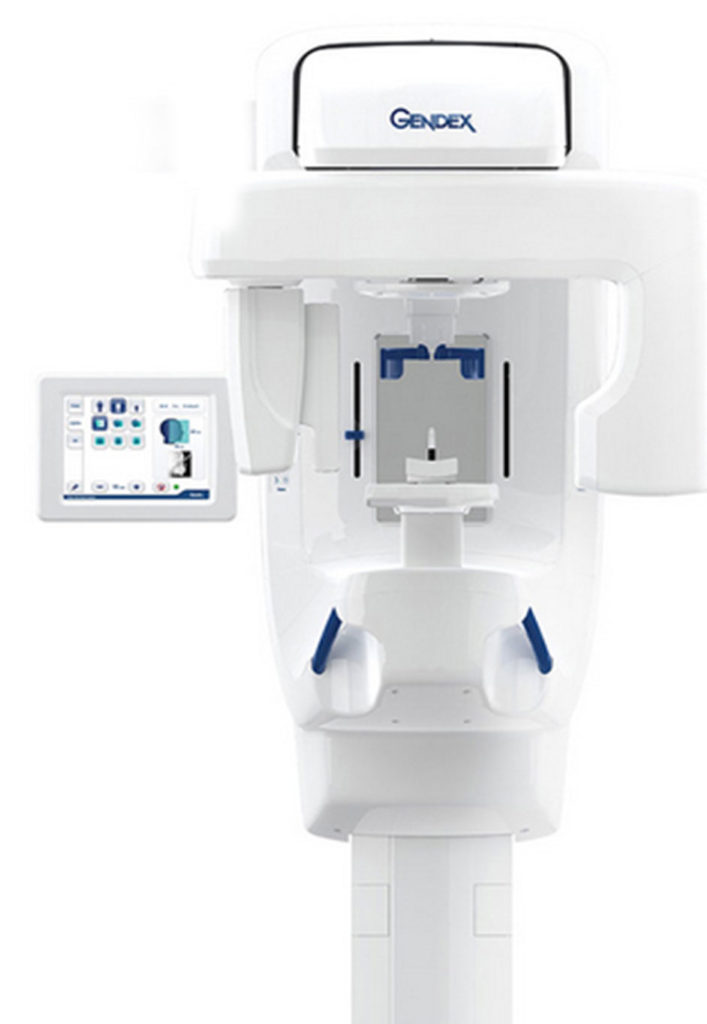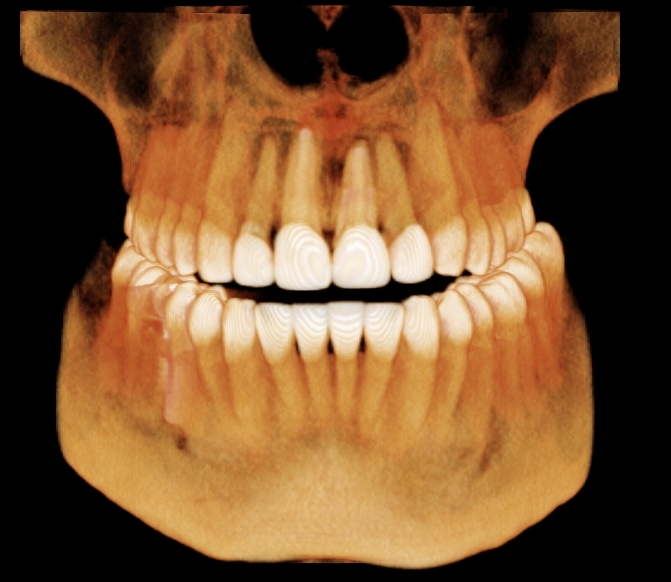This guide aims to answer your questions about having a dental cone beam computerised tomography (CT) scan. It explains the benefits, risks and alternatives, as well as what you can expect when you come to our practice.

What is dental cone beam CT scan?
A dental cone beam CT scanner uses x-rays and a computer to produce 3D cross sectional images of the jaws and teeth. It is a compact, faster and safer version of the regular CT scanner. Through the use of a cone shaped x-ray beam, the size of the scanner, radiation dosage and time needed for scanning are all much reduced.
The machine moves around your head in a circular motion in a similar way to the panoramic dental radiography unit, which is commonly used in dental surgeries and hospitals, which you may have already experienced.
What happens during dental cone beam CT (CBCT)?
You will be positioned in the CBCT machine. Your head will be carefully positioned and you will be asked to keep absolutely still while the scan is taken. The positioning takes a few minutes, but each scan takes only a minute or so. You may need more than one scan depending on the reason for your examination. The whole procedure should not take more than 30 minutes.

Why should I have a dental CBCT?
The scan will give us detailed information, which cannot be obtained from more conventional x- ray equipment. For example, if you are being considered for dental implants or other special procedures it enables us to assess the exact shape of the bone.
What are the risks?
CBCT scans are low dose examinations and give an x-ray dose to the patient that is considerably less than a medical CT scan.
A medical CT scan of the upper jaw gives a radiation dose equivalent to approximately 179- 578 days of background radiation (the radiation constantly present in the environment). A CBCT scan of the whole jaw would be comparable to approximately 12-30 days of normal background radiation.
As with any x-ray examination, please inform us if you might be pregnant.
Are there any alternatives?
No. Without this examination it may not be possible using traditional dental x-ray pictures to assess the bone accurately enough to allow your treatment to be performed safely.
How can I prepare for dental CBCT?
Before your CBCT you will be asked to remove glasses, dentures, hearing aids, earrings, tongue studs, necklaces, hair clips and any other metal accessories that may affect the scan. This is not an examination that requires any injections or special preparations beforehand.
If you are having the scan for dental implant planning, you may be asked by your dentist to bring a localisation stent with you. This is a special ‘plate’ which you will wear rather like a denture, containing markers to guide our x-ray examination. You will only need to wear this during the scan.
Giving my consent (permission)
This guuide is designed to help you to understand the examination and any associated benefits, risks and alternatives. If there is anything you don’t understand or you need more time to think about it, please tell the staff caring for you.
Remember, it is your decision. If you change your mind at any time, please let staff know immediately. Your wishes will be respected at all times. If you would like to read our consent policy, please tell a member of staff.
Will I feel any pain?
This procedure is not painful, but you will need to remain still for the duration of the scan. If you are claustrophobic please mention this to the radiographer so that they can offer you appropriate support and advice.
What happens after I have had the CBCT scan?
After the examination you will be able to go home straight away. The CBCT will be reported on and the report will be sent through to the dentist who has referred you to us for the examination.
What do I need to do after I go home?
Special aftercare is necessary, you will be able to eat and drink and carry on all your normal activities.
